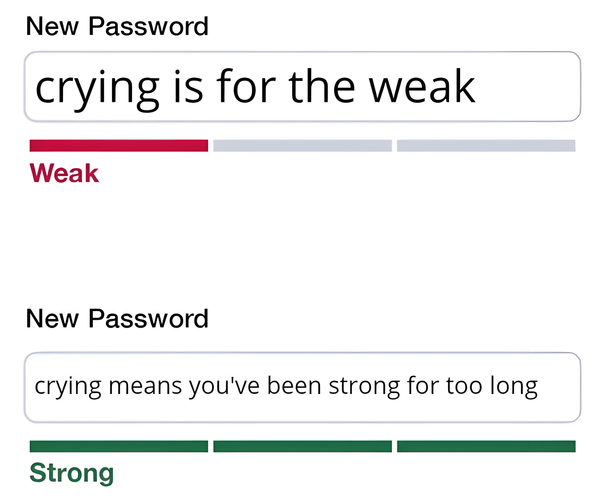The Managers' Guide #96

The first and the best victory is to conquer self. - Plato
Design Your Organization for the Conflicts You Want to Hear About
🔍 The author presents two key organization design principles:
- Design for the conflicts you want to hear about
- Don't put department B under department A unless the executive can add value to both
⚔️ Organizational combinations silence important conflicts — when you combine departments (like putting marketing under sales), you stop hearing about tensions between them because one person resolves them internally.
👥 Jensen Huang's success with 60 direct reports challenges conventional wisdom about span of control — the author suggests 8-10 direct reports is reasonable for a CEO managing senior people.
🌍 The “value-add” principle defeats empire building — executives should only manage departments where they can genuinely contribute expertise, not just to grow their organizational footprint.
💬 The blog uses European sales leadership as an example — appointing someone without European experience, connections, or language skills fails the “value-add” test, even if they're called “VP of Worldwide Sales.”
🛠️ Three strategies to mitigate signal loss as organizations grow:
- Build a transparency culture rewarding frank discussion
- Create extended leadership teams beyond direct reports
- Use metrics and KPIs to see through organizational layers
10 Mistakes Executive Teams Make When Building Workplace Culture
🤝 Culture must be owned by executives, not outsourced — when leaders delegate culture to HR or consultants, it signals culture isn't a true business priority.
🔄 Values must be demonstrated through consistent actions — leaders should translate values into observable, measurable habits rather than just talking about them.
👥 Employee involvement is critical — excluding the broader team from decision-making reduces ownership and investment in cultural initiatives.
👔 Frontline managers are “culture carriers” — they need proper training, communication skills, and support to effectively reinforce desired cultural habits.
⚡ Initiative overload creates fatigue — prioritizing a few specific high-impact habits with integrated plans works better than launching multiple disconnected initiatives.
🎯 Purpose matters more than perks — employees need to understand how their work contributes to something meaningful; free snacks can't replace feeling valued.
⚖️ Leadership accountability must be consistent — allowing high performers to violate cultural standards creates toxic double standards that undermine trust.
🌱 Culture requires long-term commitment — “emergency” training before engagement surveys won't create lasting change; balance quick wins with sustainable strategies.
🧭 Intentional culture design beats passive approaches — even great hires need clear direction; culture must be deliberately defined, communicated, and reinforced daily.
Good Managers Clear Paths
🚧 The author challenges conventional management wisdom — people are already motivated but face barriers to excellence, not a lack of motivation.
🔍 The core premise: “Nobody wakes up thinking, 'I hope I do mediocre work today'” — intrinsic motivation exists naturally in most employees.
💡 The manager's role is redefined as a “bulldozer” — clearing obstacles rather than pushing, monitoring, or incentivizing performance.
🧭 The article introduces the “obstacle audit” approach — asking team members directly what prevents them from doing their best work, then addressing the top issues.
⚠️ Common obstacles identified include contradictory directives, technical debt, lengthy approval processes, and inadequate tools — these barriers, not motivation, limit performance.
📈 One real example showed 62% increased throughput in three weeks — achieved by removing just two major obstacles (approval chain and test environment).
🛑 Managers often create “permission barriers” — requiring constant approvals and validations that slow progress and discourage initiative.
👀 Warning signs of the “motivation mindset” include tracking output over removing barriers and focusing on goals rather than resolving obstacles.
🗣️ A key insight from a senior engineer: “I don't need you to tell me what to do. I need you to run interference so I can do what I already know needs doing.”
🌟 The article concludes with a shift in measuring management success — focus on how effectively you remove barriers rather than how you “drive” performance.
How to get more headcount
🔄 Misalignments between teams and executives often stem from communication challenges — not “clueless executives” as teams might believe.
🔍 The article identifies a key problem: teams argue about specific projects (like headcount requests) when the disagreement is actually about broader issues.
🪜 The author presents a hierarchy of alignment that must be followed sequentially:
- First — Agreement on the problem to be solved
- Second — Agreement on the general approach to solving it
- Third — Evidence that the team is executing well currently
- Fourth — Discussion of the specific request (headcount, project approval, etc.)
⚠️ Skipping straight to specific requests without establishing the first three points is futile — executive resistance likely indicates misalignment on fundamentals.
🎯 Teams often misunderstand their purpose — they exist to solve company needs, not self-selected problems that interest the team members.
📊 Evidence of good execution is crucial — metrics on impact, progress, and feedback should be readily available, not created just for headcount discussions.
🧩 When teams skip alignment on the foundational points, they default to “politics” — relying on social dynamics rather than joint problem-solving.
🔄 While executives could improve their communication, the article emphasizes personal responsibility — it's more productive to improve your own communication than complain about executives.
✅ The solution is straightforward — ensure agreement on the problem and approach, provide evidence of good execution, and only then discuss specific requests.
🚫 Complaints about “politics” often come from those unwilling to address the foundational alignment issues — inadvertently contributing to the political environment they dislike.
Managing Impostor Syndrome as a New Engineering Manager
🧠 Impostor syndrome hits particularly hard when becoming an engineering manager — responsibility for others' careers amplifies self-doubt.
⚠️ Common triggers include:
- Leading engineers with deeper technical expertise
- Shifting from peer to manager relationships
- Cross-functional work with stakeholders speaking different “languages”
- Owning decisions with long-term consequences
- Public presentations of team results
- Professional isolation and loneliness
⏱️ Feedback loops stretch from minutes to months in management — unlike engineering where success signals are immediate and clear.
🔄 The article reframes self-doubt as potentially useful — it can trigger important questions and prevent overconfidence when channeled correctly.
⚖️ There's a critical distinction between productive self-doubt and decision paralysis — questioning angles is healthy, questioning your worth is harmful.
🧩 Building a support system is essential — managers, peer EMs, product managers, HR partners, and external communities all provide different perspectives.
🌱 Transparency with your team builds trust — acknowledging you're learning is stronger than projecting false confidence.
🛣️ The impostor syndrome never completely disappears — it appears whenever we stretch beyond our comfort zone, signaling growth opportunities.
🧰 Practical actions include noticing triggers, reframing doubts as learning opportunities, building connections, tracking small wins, and focusing on growth.
Learning in the Forest
🌳 The Forest is a development approach emphasizing learning over production — prioritizing long-term growth over immediate output.
🧩 The article opens with an anecdote about Dan Ingalls' team — where the least experienced team member implemented BitBLT, despite others being able to do it faster.
📈 This learning-first approach pays off through: • Greater innovation potential • Increased confidence among team members • Higher energy and engagement • Elimination of knowledge bottlenecks
🌱 For junior developers, The Forest approach accepts their limitations — rather than squeezing minimal production, it focuses on accelerating learning.
🤝 Pairing in The Forest has a distinct purpose — when seniors pair with juniors, the explicit goal is maximizing learning, not production.
⏱️ The article advises having juniors self-select tasks — each person knows best what they're ready to learn next.
🔄 Regular demos remain important — “Don't miss two in a row” keeps learning connected to delivering customer value.
🧘♂️ The approach emphasizes well-being — juniors should stop working when tired, as they may not know how to regulate anxiety or excitement.
📊 The article boldly claims “A year in The Forest is better than a Master's degree” — suggesting experiential learning in this environment is extraordinarily valuable.
🔑 The concluding insight applies The Forest principles to management — if engineers lack skills and still have the same problems a year later, that's a leadership failure, not an engineer failure.
That’s all for this week’s edition
I hope you liked it, and you’ve learned something — if you did, don’t forget to give a thumbs-up, add your thoughts as comments, and share this issue with your friends and network.
See you all next week 👋



